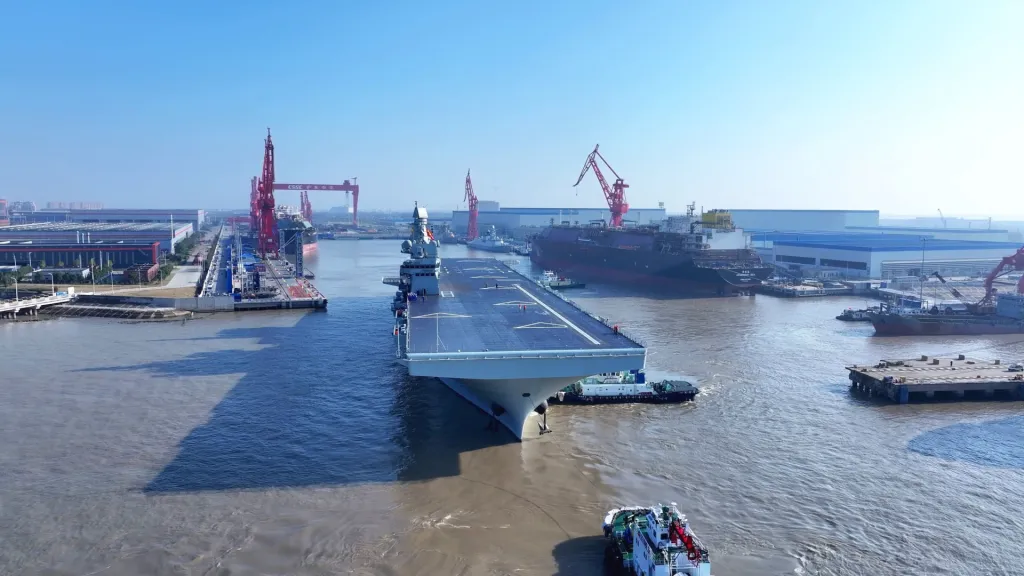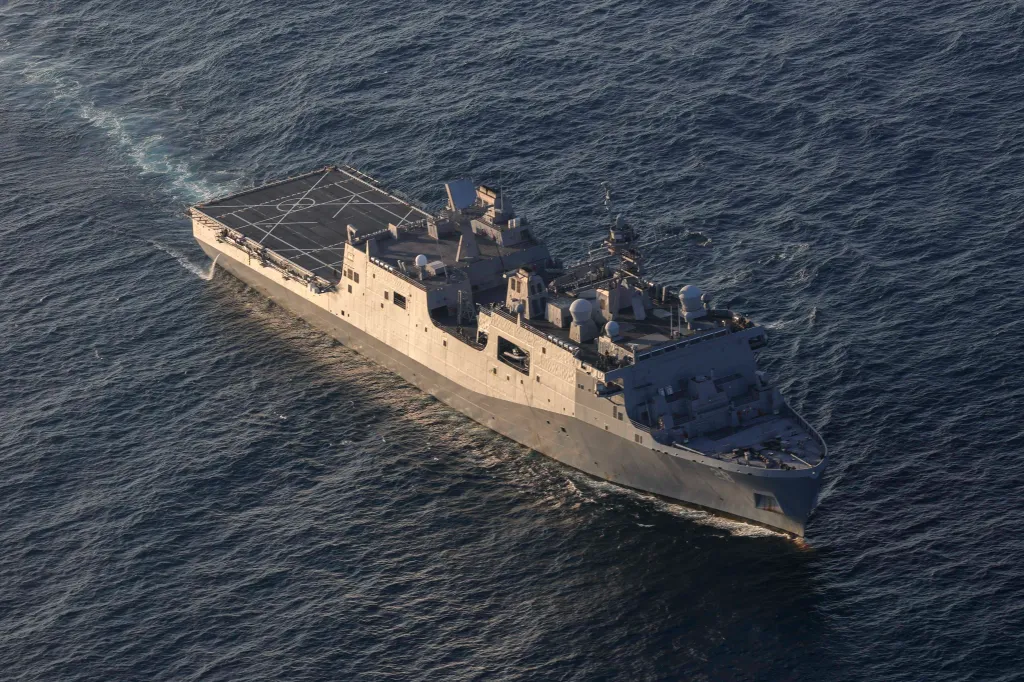China’s Type 076 Supersized Amphibious Assault Ship Heads To Sea On Its Maiden Voyage
China’s first super-sized Type 076 amphibious assault ship, the Sichuan, has left port for its first sea trials. The Type 076 is unlike any other big deck amphibious warship design globally, featuring an electromagnetically-powered catapult to support an air wing expected to include naval versions of the GJ-11 stealthy flying-wing uncrewed combat air vehicle (UCAV).

Sichuan, which has now also been assigned the hull number 51, left Hudong-Zhonghua Shipyard in Shanghai on its maiden voyage earlier today. The ship, which is currently the only one of its type, has been under construction in that yard since at least 2023. A ceremony marking its launch was held on December 27, 2024, and it was actually floated for the first time in its basin sometime afterward.

“This sea trial will mainly test and verify the reliability and stability of the power, electrical, and other systems,” according to a release from China’s Ministry of National Defense. Since its launch, the ship “has successfully completed mooring tests and equipment installation and debugging, and has met the technical conditions for sea trials.”
There had already been signs in recent weeks of significant new progress on the final fitting out of Sichuan, including the painting of full markings on its flight deck.
Another image, seen in the social media post below, had emerged at the end of last month showing what is very likely a red-colored catapult test ‘truck’ on Sichuan‘s deck. This, in turn, had pointed to the start of testing of the ship’s lone catapult.
Shipbuilders and navies around the world, including China’s People’s Liberation Army Navy (PLAN) and the U.S. Navy, have long used weighted trucks to test catapults on aircraft carriers as part of their construction or following maintenance.
The video below shows testing of the catapults on the U.S. Navy’s supercarrier USS Gerald R. Ford using weighted trucks.

Overall, Sichuan represents a particularly notable development for the PLAN. Chinese officials have said the Type 076 displaces more than 40,000 metric tons (44,000 U.S. tons). TWZ has previously assessed that the ship is around 864 feet long and that it is some 141 feet wide (or 263 and nearly 43 meters, respectively). China’s previous Type 075 amphibious assault ships, of which there are now four in service, have a stated displacement of between 32,000 and 36,000 metric tons (35,000 to 40,000 U.S. tons) with a full load, and are just over 761 feet long and nearly 121 feet wide. Sichuan is also notably wider than other big deck amphibious warfare ships in service globally, including the U.S. Navy’s America class.
Sichuan‘s unusually wide flight deck is absolutely core to the design. Along with the ship’s two islands, this has long made clear the ship is heavily focused sustained flight operations. This will include fixed-wing types launched via the catapult at the bow end and recovered via some form of arresting gear.

There have been growing signs for years now that a navalized variant of the GJ-11 UCAV, also sometimes referred to as the GJ-21, will be an especially significant part of Sichuan‘s future air wing. Most recently, around the beginning of this month, pictures emerged showing a version of the drone with an arresting hook very prominently deployed. Last year, apparent GJ-11 mockups had also appeared at a test and/or training site right on Changxing Island in Shanghai, very close to where the Type 076 was being built.

Just this week, Chinese authorities announced that the land-based version of the GJ-11, now officially named the Mysterious Dragon, had entered operational service with the People’s Liberation Army Air Force (PLAAF). Any future naval versions of the drone could also find their way onto other big deck ships in the PLAN’s inventory, including its first catapult-equipped aircraft carrier, the Fujian, which was commissioned last week.

Sichuan‘s air wing will not be limited to variations of the GJ-11 design, and is expected to include a host of other current and future crewed and uncrewed types. Various helicopters, as well as an as-yet unnamed crewed tiltrotor aircraft under development in China, which is now in flight testing, could be part of that mix.
The Type 076 design also has a well deck at the stern to support traditional amphibious assault operations.
As TWZ previously wrote about the overall significance of the Sichuan:
“The potential value to the PLAN of having a fleet of very large deck amphibious assault ships that are highly capable of large-scale drone operations as well as traditional amphibious assaults is clear. These ships could be used to launch and recover UCAVs like the GJ-11 and other types of drones to perform a host of missions from maritime strike to intelligence, surveillance, and reconnaissance (ISR). They could be used to provide additional ‘mass’ in support of the operations of larger carrier strike groups and help to free the air wings of flattops like Fujian up for tasks they might be better suited for. In addition, they could provide a lower tier of naval aviation support that could be employed independently.”
…
“Simply having more naval aviation capacity overall would give the PLAN added flexibility for various operations closer to the mainland, including a potential military intervention against Taiwan or defending its expansive and largely unrecognized territorial claims in places like the South China Sea. Type 076s could also help project naval and air power further from China’s shores, something that has also been a driving factor behind the country’s broader carrier ambitions.”
…
“The Type 076 could help provide support during humanitarian assistance and disaster relief operations. Big deck amphibious warfare ships, in general, provide their operators with immensely valuable platforms for projecting both hard and soft power.”

Sichuan is reflective of a larger effort by the PLAN to significantly expand its capabilities and operational capacity, including for projecting power well beyond China’s shores and any regional contingencies. A dramatic expansion in the naval aviation realm has been a particular centerpiece of this modernization push, which traces all the way back to the 1990s. This is all further underscored by the increasingly strong evidence that China’s next supercarrier will be a nuclear-powered design.
Whether the PLAN’s current ambitions include plans to acquire more Type 076s is unclear. Putting to sea now is certainly another major step in the process of getting Sichuan into actual operational service.
Contact the author: [email protected]



